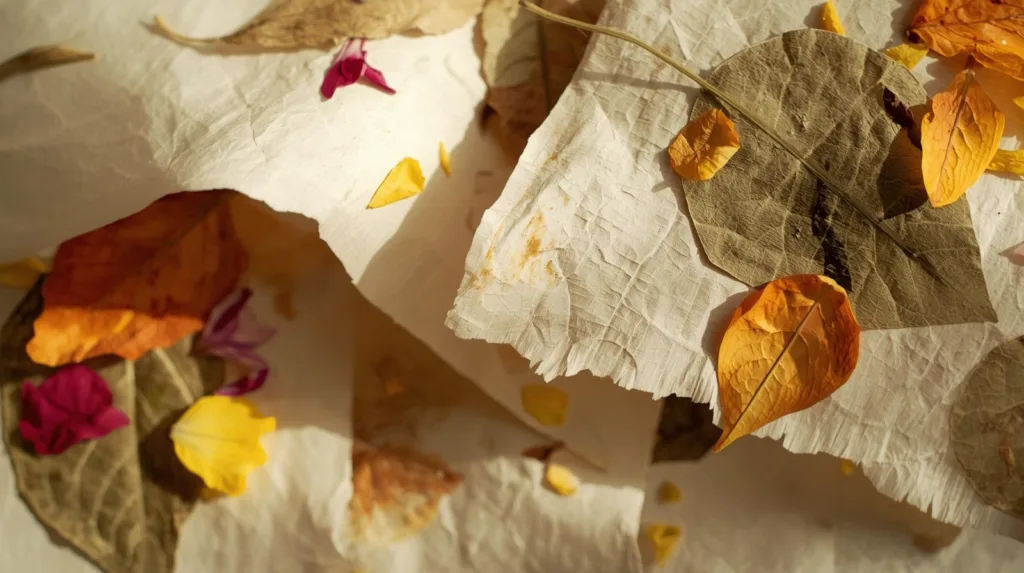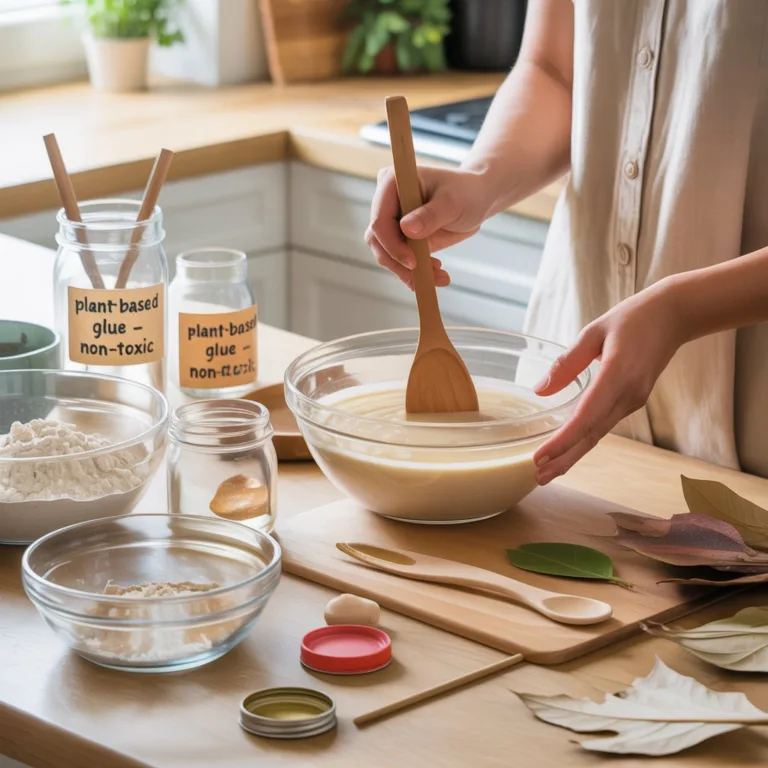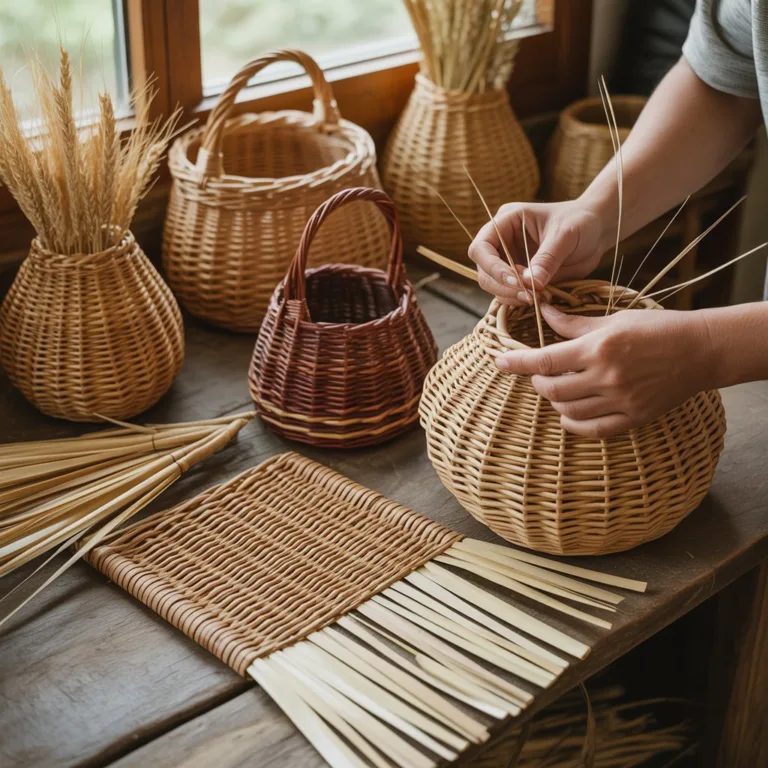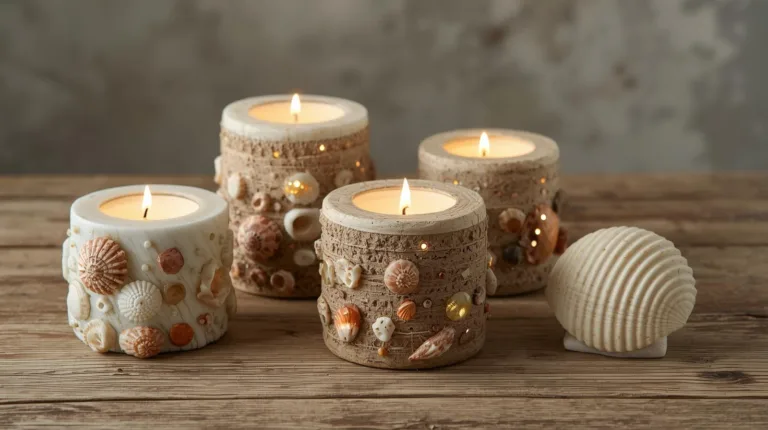In an age where sustainability is more than a trend—it’s a responsibility—crafting handmade paper from recycled leaves and petals offers a creative and eco-friendly way to repurpose natural waste into something beautiful and functional. Whether you’re an artist, teacher, crafter, or environmental enthusiast, this simple yet fulfilling process allows you to transform discarded plant materials into textured, colorful, and one-of-a-kind paper.

Handmade paper is not just about recycling—it’s about slowing down, reconnecting with nature, and appreciating the delicate details that factory-made paper can never replicate. Each sheet becomes a piece of art, carrying the imprints, colors, and stories of the leaves and petals it’s made from.
This detailed guide will walk you through the full process—from gathering materials to pressing, drying, and using your finished eco-paper—while exploring creative ideas, sustainability benefits, and ways to use handmade paper in your daily life or small business.
The Beauty and Purpose of Handmade Paper
Reviving Ancient Traditions
Before industrial papermaking took over, paper was crafted by hand from natural fibers such as cotton, flax, hemp, and even mulberry bark. Ancient cultures valued this slow process, not just as a craft, but as an art form. Today, modern crafters are returning to these roots, merging traditional techniques with eco-conscious values.
By learning how to make handmade paper from recycled leaves and petals, you honor this tradition while promoting sustainability in your creative projects.
Why Use Natural Materials?
Factory-made paper often involves deforestation, chemical bleaching, and energy-intensive production. Handmade paper, on the other hand, uses waste materials—such as old paper, dried leaves, flower petals, and even vegetable fibers—reducing landfill waste and carbon footprint.
Beyond the environmental benefits, the natural materials infuse the paper with organic beauty. Leaves add texture, petals add bursts of color, and the imperfections add charm. Each sheet feels alive—unique in tone, fiber density, and character.
Materials and Tools You’ll Need
Creating handmade paper is surprisingly simple, and most materials are easily found at home or in your garden.
Core Materials
- Old paper scraps: Recycled office paper, envelopes, or newspaper. Avoid glossy or plastic-coated paper.
- Leaves and petals: Choose thin, dry materials like rose petals, fern leaves, or bougainvillea.
- Water: For soaking and blending pulp.
- A mesh frame or deckle: Used to form and lift the pulp into a sheet shape.
- A blender or food processor: To turn paper into pulp.
- A basin or large tub: For mixing water and pulp.
- Cloth or felt sheets: For pressing and drying.
- Rolling pin or sponge: To remove excess water.
Optional Additions
- Natural dyes: For soft, earthy tones.
- Dried herbs or seeds: Add fragrance and texture.
- Cotton fibers or linen scraps: For extra strength.
- Essential oils: A few drops of lavender or eucalyptus can enhance the scent.
If you’re working with children or students, this project is also a fantastic educational activity—it demonstrates recycling, chemistry, and art all at once.
Preparing the Pulp
Soaking and Blending
Start by tearing old paper into small pieces, roughly 2–3 cm in size. Place them in a bowl or tub and soak in warm water for several hours—or overnight—for easier blending.
Once softened, blend the soaked paper with fresh water until you get a smooth, porridge-like consistency. This is your base pulp.
At this stage, you can experiment: add a few drops of natural dye or mix in tiny bits of leaves and petals to create a textured pulp. The more you experiment, the more you’ll discover the balance between structure and decoration.
Incorporating Leaves and Petals
For best results, use dried and flattened leaves—they’re easier to embed and won’t bleed too much color. Tear or crumble them into smaller pieces. Petals should also be dry and free of moisture.
You can mix them directly into the pulp for a natural scattered look or sprinkle them over the surface of the paper later for decorative placement.
Forming Your Handmade Paper
Setting Up the Basin
Fill a wide basin or tub halfway with water and add a few handfuls of pulp. Stir gently with your hand to distribute the fibers evenly.
The consistency of the mixture determines the paper’s texture. More pulp creates thicker sheets; more water results in thinner, translucent paper.
Using the Frame or Deckle
Dip your frame or deckle into the pulp mixture at a slight angle, then lift it out smoothly. Let the water drain, and lightly shake the frame to spread the pulp evenly across the surface.
You’ll see bits of leaves and petals embedded in the pulp—this is where your artistic touch comes in. You can reposition or add more natural elements by hand while it’s still wet.
Transferring to a Drying Surface
Carefully flip the frame onto a cloth, felt sheet, or absorbent towel. Press gently with a sponge or rolling pin to remove excess water. Slowly lift the frame, leaving the wet sheet on the fabric.
Repeat the process for more sheets until you’ve used all the pulp.
Drying and Pressing
Air Drying Naturally
Allow the paper to air-dry in a well-ventilated area, away from direct sunlight. This can take 24–48 hours depending on humidity.
As it dries, the color of the paper will lighten slightly, revealing the delicate veins of leaves or the soft tint of petals.
Speeding Up Drying
If you need faster results, use a fan or place the sheets near a gentle heat source (not directly on it). Avoid hair dryers or direct heat, as they can warp the paper.
Flattening the Sheets
Once completely dry, the sheets may have some waviness. To flatten them, stack them between clean cloths and place a heavy book or board on top for a few hours.
You’ll end up with smooth, durable handmade paper—ready to be used for countless eco-friendly projects.
Designing with Natural Textures
Using Petals for Color and Pattern
Flower petals like rose, hibiscus, or marigold add subtle tones of pink, red, or yellow to your paper. Try combining petals from different flowers to create gradient effects.
For a more sophisticated design, arrange petals or leaves in patterns before pressing—think of it like painting with nature.
Adding Leaf Impressions
Pressing fresh leaves into the wet paper surface creates gentle imprints and outlines. Once dry, they leave behind natural patterns, similar to fossil prints. Ferns, maple, or eucalyptus leaves work beautifully for this.
Layering and Collage Effects
Mix paper pulp colors or layer sheets with varying textures. Add thin twigs, bits of jute, or pressed herbs for artistic dimension. These layered designs work especially well for greeting cards or wall art.
Creative Uses for Handmade Paper
Eco-Friendly Stationery
Your handmade paper can become elegant stationery for personal letters, invitations, or journaling. The embedded petals make each piece visually captivating.
Gift Wrapping and Tags
Use larger sheets for wrapping small gifts or cutting into tags. Pair them with natural twine for a rustic, eco-conscious presentation.
Art and Calligraphy
The natural fibers and textures enhance watercolor, ink, or pencil art. Artists love the unpredictability of handmade paper—it adds character to every brushstroke.
Scrapbooking and Craft Projects
Use handmade paper for DIY albums, bookmarks, or cards. It pairs well with wooden accents, dried flowers, and pressed botanical designs.
Business Branding
If you sell eco-friendly products or handmade crafts, using your own recycled paper for tags, labels, or thank-you notes reinforces your commitment to sustainability and sets your brand apart.
The Environmental Impact of Handmade Paper
Reducing Waste
Making handmade paper from recycled leaves and petals diverts waste from landfills. Even small-scale crafting reduces the burden on natural resources by reusing what’s already available.
Avoiding Chemicals and Energy Waste
Unlike industrial paper production, handmade methods use no bleach, synthetic dyes, or harmful additives. They consume far less water and energy, making them one of the most sustainable forms of paper production.
Encouraging Local and Sustainable Sourcing
Gathering leaves and petals from your garden or community encourages mindfulness about local ecosystems. It’s also a gentle reminder that beauty exists in what we often consider waste.
Educational and Community Value
Teaching Sustainability Through Craft
Workshops that teach papermaking can raise environmental awareness while engaging participants creatively. Schools, art studios, and eco-centers can use papermaking as a hands-on tool to discuss recycling and nature conservation.
Therapeutic and Mindful Benefits
Papermaking is a calming, sensory-rich activity. The repetitive motions—tearing, blending, pressing—offer a meditative rhythm that promotes mindfulness and reduces stress.
It’s not just crafting; it’s reconnecting with simplicity.
Community and Small Business Opportunities
Local artisans can sell handmade paper or collaborate with artists, florists, or wedding planners for custom orders. There’s growing demand for eco-friendly paper in sustainable events and packaging industries.
Tips for Perfect Handmade Paper Every Time
- Soak paper thoroughly: It blends more smoothly and creates better texture.
- Use cold-pressed flowers: They retain color and form without disintegrating.
- Keep water clean: Changing it often prevents dull or grayish paper.
- Experiment with textures: Add fibers from cotton, linen, or even banana peels for new effects.
- Store carefully: Keep sheets flat and dry to prevent curling.
Preserving the Natural Beauty of Handmade Paper
To maintain the beauty of your eco-paper:
- Avoid prolonged exposure to sunlight to prevent fading.
- Store between acid-free sheets if you plan to archive them.
- Use a light fixative spray if applying watercolor or ink to prevent bleeding.
These simple steps ensure your handmade creations stay vibrant and durable for years.
Bringing Nature into Your Craft
Making handmade paper from recycled leaves and petals is more than a creative project—it’s a gentle act of care for the environment and a way to reconnect with the natural cycle of creation and renewal.
Each time you blend, pour, and press, you’re witnessing transformation: what was once waste becomes art, utility, and inspiration. The finished paper tells a story of patience, resourcefulness, and appreciation for nature’s materials.
So, gather some old paper, step into your garden, and start collecting leaves and petals. Let your creativity flow, and let the earth guide your craft. The next time you write a note, gift a handmade card, or wrap a present, you’ll know that even the smallest gesture can honor the planet.

Lucas Hartman is a DIY enthusiast and sustainability advocate focused on natural crafts and eco-friendly home décor. With a background in arts and design, Lucas creates tutorials that help families and hobbyists transform everyday recycled or organic materials into beautiful, functional projects.



